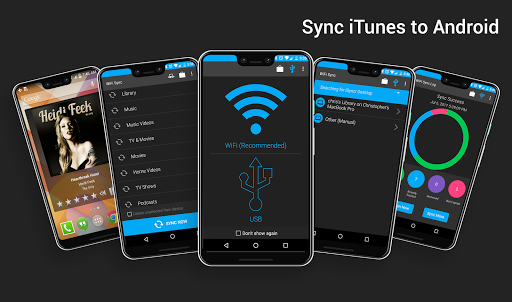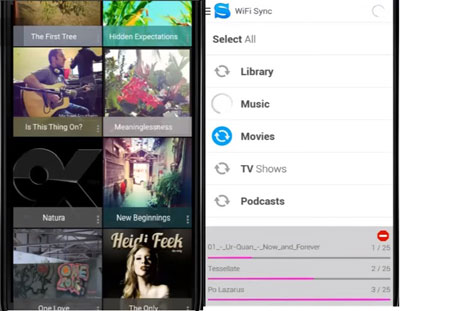

#Isyncer movies android#
Establishing the permissions for it to communicate is also a bit complicated, although that is in some ways due to Android and Windows. If you want to keep adding playlists slowly, it has to rescan iTunes for each playlist. It took me a while to realize using the USB transfer that it was calculating the space as a preparation to sync, and that you had to initiate the sync separately. The interface is, at times, user unfriendly, or at least, non-intuitive.I have to dial it back to ⭐⭐⭐⭐½ because of some problems. I cannot, however, give the products a ⭐⭐⭐⭐⭐ rating at this time. Over time, I’m playing with tuning the process to make it more efficient. In general, the process was easy once I figured it out. The Rocket Player works well, and even additionally supports its own form of smart playlists so that I could create ones that do live updates (existing smart playlists in iTunes transfer as a static copy that do not update). The good news is that, after some stumbles, I was able to get the process working and copied all the music and playlists to my SD card. I ordered the card, installed it, and attempted to sync. So, after stumbling on a sale on 512GB MicroSD cards (for $99 at Amazon, half-price!), I decided to go the iSyncr route. I use ratings to flag tracks I like, and tracks that need repair. Rocket Player was a music player designed to play music from an Android’s internal storage, and provided a widget to add ratings. They appeared to do what I wanted to do: iSyncr would read the iTunes database and move the music to an SD card it would also sync back to iTunes play times, counts, and ratings. The apps had free and pay version, and the pay version was a one time payment. They have two apps: iSyncr and Rocket Player, that were of interest. Both also require monthly payments to Apple or Google, companies that don’t need your money, avoid taxes, and are not longer out to do good, IMHO.īut then I stumbled upon the apps from a small family company, JRT Studio ( FB). They also have other arbitrary limits, such as GPM limiting playlists to 1,000 songs.

Both work with iTunes, either natively or with a media manager. Initially, I thought about that option, in particular with Apple Music, which would support Smart Playlists.
#Isyncer movies download#
But programs like Apple Music and Google Play Music (GPM) do allow you to, within limits (50,000 songs for GPM 100,000 songs for AM), upload your music library to their cloud (where they may substitute existing tracks they have), and then download it into the SD card from your mobile device. For a multitude of reasons, I do not like streaming music - you need larger data packages for your phone, and you may not always have service where you want it. When I started exploring the Android ecosystem, the first option was a cloud subscription model.
#Isyncer movies plus#
An older iPhone has more storage, but is also much more expensive, and has been designed by Apple to have diminishing battery life - plus planned obsolescence. An iPod Touch does not work, because their storage is not expandable and currently maxes out at 128GB.

#Isyncer movies Pc#
There are precious little details online about their interfaces, and especially about their interfaces on the PC side for managing the music libraries.


 0 kommentar(er)
0 kommentar(er)
